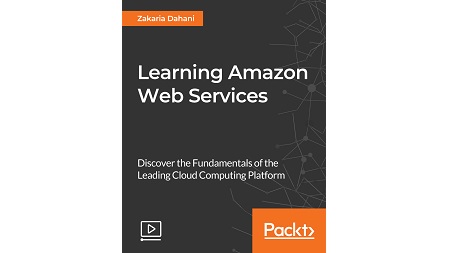
English | MP4 | AVC 1920×1080 | AAC 48KHz 2ch | 2h 44m | 401 MB
Develop, deploy, and integrate web applications with AWS
Whether you’re looking for compute power, database storage, content delivery, or other functionality, AWS has the services to help you build advanced applications with increased flexibility, scalability, and reliability. The Getting Started with Amazon Web Services” video course is designed to provide you with AWS basics and fundamentals. The course covers many aspects of AWS. You will master the essential concepts of the AWS platform and the AWS Management Console. Furthermore, you will be introduced to the security measures provided by AWS using AWS Identity and Access Management (IAM). This course will allow you to cover the foundational services of AWS, including the Computing, Networking, and Storage services of AWS.
Finally, you will be able to scale and manage your infrastructure using different management tools. When you’ve finished this course, you will have experience working with AWS services that will help you as you work on your own applications.
This course follows a step-by-step approach. You will be able to learn the most important concepts of AWS and apply your knowledge through simple hands-on example that will ultimately make your learning easier. Learn to implement AWS services that will help you to work on your own applications.
What You Will Learn
- Use AWS Identity and Access Management to manage access to specific resources in your organization’s Amazon Web Services account
- Create groups of users, set permissions for each group, generate a password, and use a sign-in URL to sign in to the console as an IAM user.
- Understand EC2 features and capabilities, including instance families available in Amazon EC2 and the differences between their hardware types and capabilities.
- Amazon VPC, including subnetting, routing, security, NAT, and much more. You’ll also learn about the different approaches and use cases for optionally connecting your VPC to your physical data center with VPN or AWS Direct Connect.
- Amazon S3 and Amazon Glacier, including durability, availability, and scalability.
- Recognize how Amazon EBS can be deployed with Amazon EC2, its features and benefits, best practices, and details about its performance and volume types.
- Implement Amazon RDS to enable customers to launch an optimally configured, secure, and highly available database with just a few clicks. We overview how RDS works and best practices to achieve optimal performance, flexibility, and cost saving for your databases.
- Understand key concepts and the fundamentals of Amazon DynamoDB, and explore the DynamoDB console and the common use cases and benefits of this high-performance key-value JSON document store.
- Use Elastic Load Balancing to automatically distribute incoming application traffic across multiple Amazon EC2 instances for fault tolerance and load distribution.
- Apply auto-scaling to maintain application availability and scale your Amazon EC2 capacity automatically according to conditions.
- Improve monitoring and automation capabilities using Amazon CloudWatch.
Resolve the captcha to access the links!